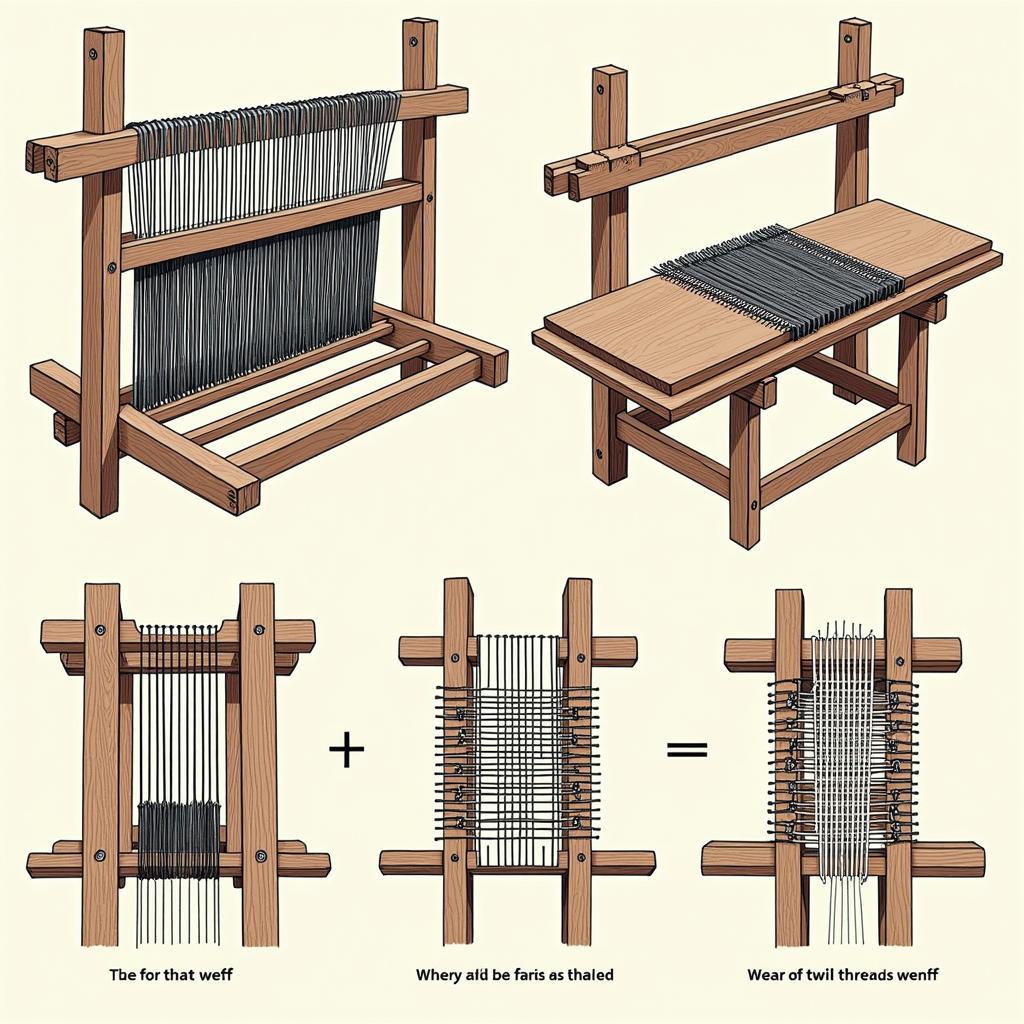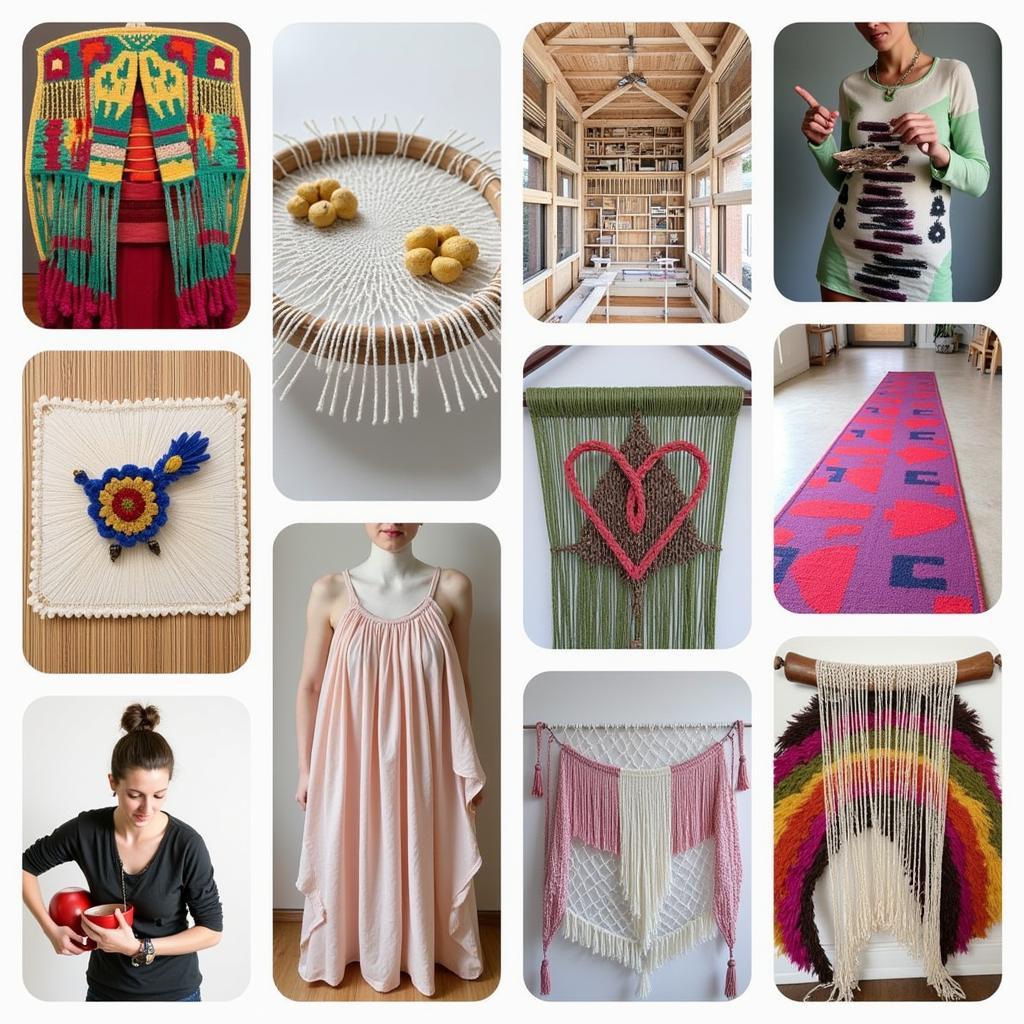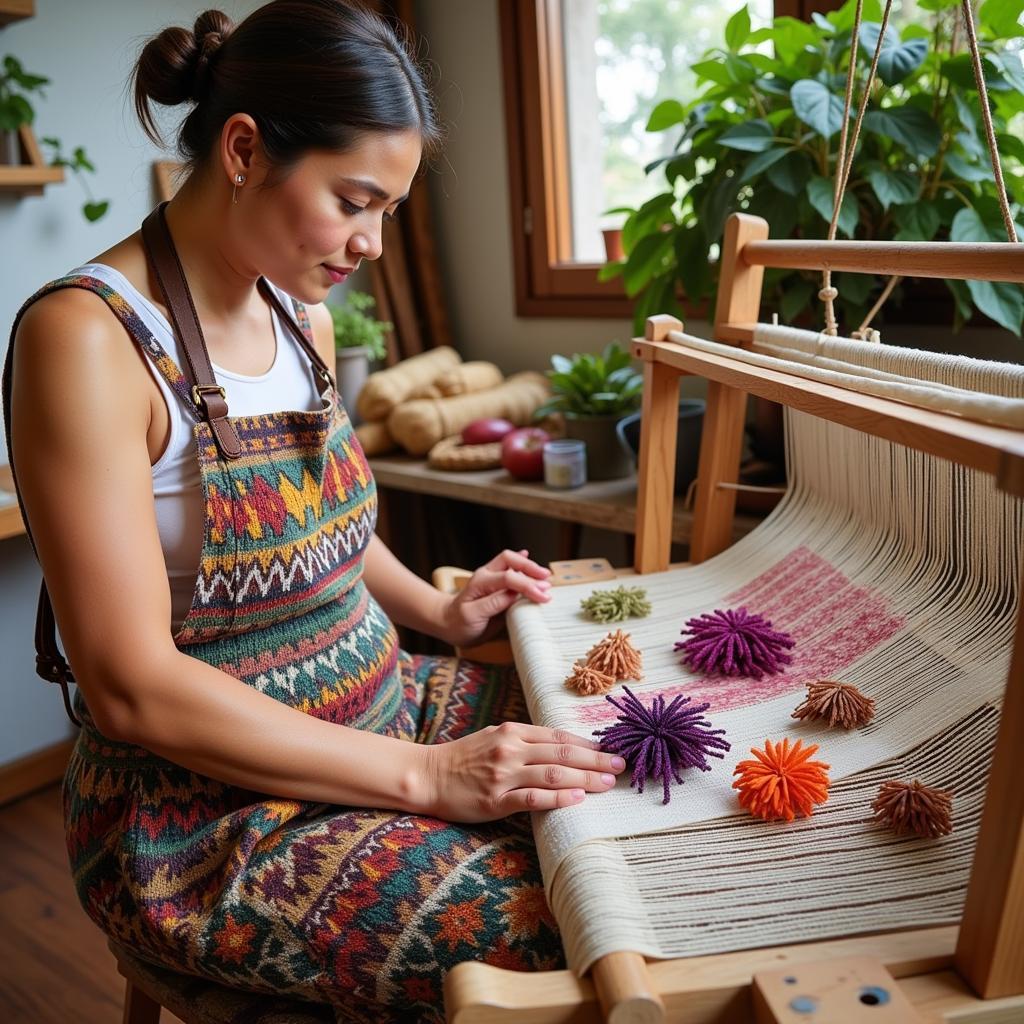Exploring the Art of the Loom: A Journey Through Weaving
The Art Of The Loom, a timeless craft, intertwines threads to create textiles, tapestries, and more. From ancient civilizations to modern ateliers, weaving has been a cornerstone of human expression and practicality. This article delves into the rich history, diverse techniques, and captivating artistry that lies within the world of the loom. After reading this article, you’ll have a newfound appreciation for the intricate process and the beautiful creations that emerge from the loom. Check out our tips on watercolor flower wall art.
Weaving Through Time: A Historical Perspective
The earliest evidence of weaving dates back to the Neolithic era, revealing the fundamental role it played in early societies. From simple mats and baskets to intricate fabrics, the loom evolved alongside human civilization. Ancient Egyptians, known for their fine linen, employed sophisticated looms to create textiles that were both functional and symbolic. Similarly, intricate tapestries adorned medieval castles, narrating stories and showcasing the artistry of the time.
The Loom’s Influence on Culture and Tradition
The art of the loom wasn’t just about creating cloth; it was intrinsically linked to cultural identity and tradition. Different cultures developed their unique weaving patterns and techniques, often reflecting their beliefs and values. Navajo weaving, for instance, incorporates symbolic designs that tell stories and connect generations. Across the globe, weaving became a means of artistic expression, preserving heritage and passing down knowledge through generations.
Understanding the Mechanics of the Loom
How does a loom work, you might wonder? At its core, the loom is a device that interlaces two sets of threads – the warp and the weft – to create fabric. The warp threads are stretched lengthwise on the loom, forming the foundation of the textile. The weft threads are then passed over and under the warp threads, creating the intricate patterns and textures that define woven fabric. Various types of looms exist, from simple frame looms to complex jacquard looms capable of producing intricate designs. Want to learn about another art form? Explore marigold nail art.
 Weaving Loom Mechanism
Weaving Loom Mechanism
Different Types of Looms and Weaving Techniques
The world of weaving is vast and varied, offering a wide array of looms and techniques. From the basic frame loom suitable for beginners to the more advanced floor loom, each type offers unique possibilities. Tapestry weaving, for example, allows for intricate pictorial designs, while backstrap weaving, traditionally practiced in many indigenous cultures, utilizes the weaver’s body as part of the loom’s tensioning system. Explore more art events at the Bloomsburg Art Festival.
The Art of the Loom in the Modern World
While technology has transformed many industries, the art of the loom continues to thrive. Contemporary weavers are pushing the boundaries of the craft, experimenting with new materials, techniques, and designs. From fiber art installations to wearable art, weaving is experiencing a resurgence in popularity, proving its enduring relevance in the 21st century. Learn about an upcoming event, the Bartow Bloomin Arts Festival 2024.
 Contemporary Weaving Art
Contemporary Weaving Art
Weaving a Sustainable Future
The art of the loom also aligns with the growing emphasis on sustainability and ethical production. Many weavers are embracing natural fibers and dyes, minimizing their environmental impact. Furthermore, the slow and deliberate nature of weaving encourages a mindful approach to creation, promoting a deeper connection between the maker and their craft.
 Sustainable Weaving Practices
Sustainable Weaving Practices
Conclusion: The Enduring Legacy of the Loom
The art of the loom is a testament to human ingenuity and creativity. From its ancient origins to its contemporary resurgence, weaving has shaped cultures, told stories, and adorned our lives. As we continue to explore new possibilities within this timeless craft, the art of the loom will undoubtedly continue to inspire and captivate for generations to come. Consider adding some abstract flower wall art to your home.
FAQ
- What are the basic materials needed for weaving?
- What are the different types of weaving patterns?
- How do I choose the right loom for my needs?
- Where can I find resources and tutorials for learning to weave?
- What are some common mistakes to avoid when weaving?
- How can I care for my woven creations?
- What are some contemporary applications of weaving?
If you need further assistance, please contact us:
Phone: 02462573573
Email: danteum@gmail.com
Address: Savico Megamall, 7-9 Đ. Nguyễn Văn Linh, Gia Thụy, Long Biên, Hà Nội 10000, Việt Nam. We have a 24/7 customer support team.


